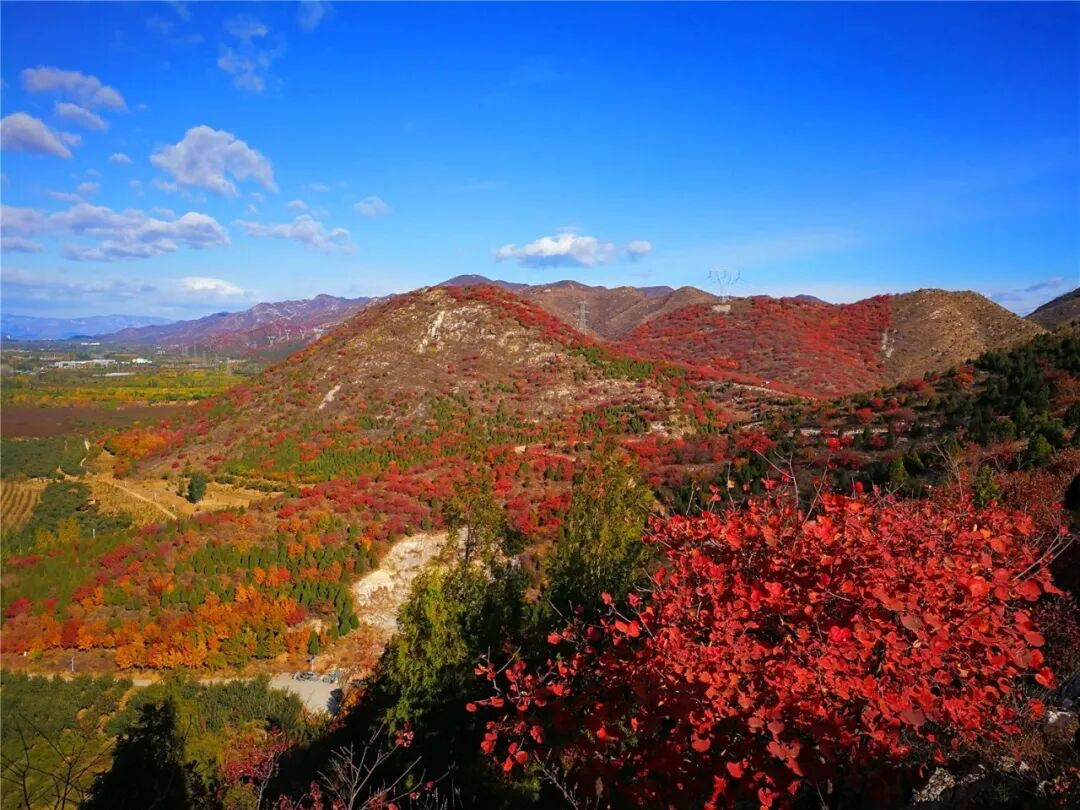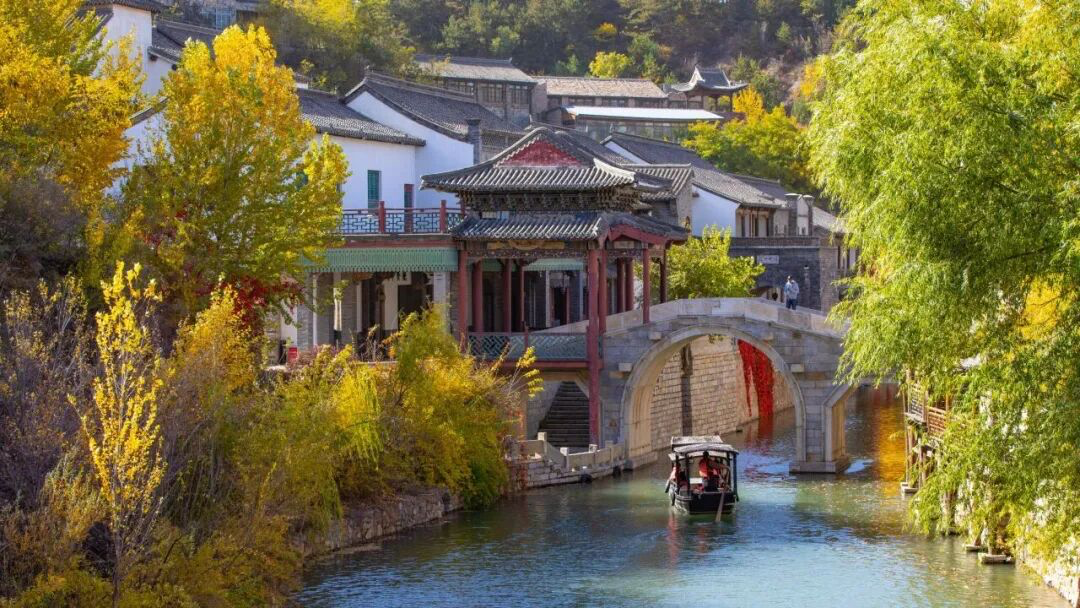World Heritage Sites are of universal importance to all of humanity, for both the present and the future. Beijing, as a famous historical and cultural city, has a total of seven World Heritage Sites that you should not miss when visiting the city.
01 The Great Wall

In 1987, the Great Wall was inscribed on the World Heritage List. Spanning more than 2,000 years and covering over 100,000 li, the Great Wall lies like a dragon across the mountains, rivers, lakes and seas in the northern part of China.

The Great Wall is a great military defense project built continuously on the northern border of the country by successive Chinese dynasties from the 3rd century BC to the 17th century AD. The Great Wall extends from Shanhai Pass of Hebei in the east to Jiayu Pass of Gansu in the west, with a total length of more than 20,000 kilometers. The main body of the Great Wall includes fortifications consisting of walls, horse paths, fortified towers, bunkhouses, etc., and related military facilities such as fortresses and frontiers configured along the route. Today, the Great Wall, bearing the spirit of the times of peace-keeping and openness and tolerance, welcomes friends from all over the world to enjoy its magnificent view.
02 The Palace Museum

In 1987, The Palace Museum was inscribed on the World Heritage List.
Formerly known as the Forbidden City, The Palace Museum was the royal palace of the Ming and Qing dynasties. It is an important carrier and masterpiece of Chinese civilization for more than 5,000 years and a world heritage site renowned worldwide. The Palace Museum is Beijing's cultural name card, and its magnificent architecture, rich collections, and vast canonical literature have made the world yearn for it. For those who pay a visit to Beijing for the first time, Palace Museum is a must-visit spot.

Currently, the Palace Museum's first exhibition of the year 2023, "A Joint Exhibition on Jinshi Culture and Arts Through the Ages - featuring Chinese ancient imperial scholars" kicked off at the Wumen Exhibition Hall and East Yanchi Pavilion. In the exhibition, visitors can see scenes of imperial examination and candidates' answer sheets, as well as the joyful moments after passing the examination. They can also learn about the homophone and word games that reflect the wisdom of the ancients and feel the charm of traditional culture that travels thousands of years through history. The exhibition will be open until April 2nd.

03 Peking Man Site at Zhoukoudian

In 1987, the Peking Man Site at Zhoukoudian was inscribed on the World Heritage List.
Located in the northern part of Dragon Bone Hill, Zhoukoudian Town, Fangshan District, Beijing, Peking Man Site at Zhoukoudian is one of the most abundant, systematic and valuable early man sites of the Upper Paleolithic in the world.

The Peking Man Site at Zhoukoudian is divided into two parts, one is the relic site park and the other is the museum. The relic site park mainly exhibits the original fossil excavation sites and some stratigraphic field displays. The museum has rich and detailed exhibits, so that visitors can learn a lot of interesting archaeological knowledge such as "the first man who wore shoes".

From February 13th to 19th, the 3rd Cultural & Art Fair of the National Archaeological Park of China was held in Zhoukoudian, Fangshan, Beijing. During the fair, visitors can visit the cultural bazaar, watch the 4D film of "Peking Man", and have an immersive experience of "meeting our ancestors" to learn about the ancient culture. Children can use professional tools to clean and restore fossils under the guidance of staff. They can also use professional excavation tools to simulate excavation in the 300 square meters of simulated archaeological excavation area in the site area, as well as clean and identify the fossils excavated to fully learn about fossils.
04 The Summer Palace

In 1998, The Summer Palace was listed on the World Heritage List.
The Summer Palace, formerly known as the Garden of Clear Ripples, was built in 1750 during the reign of Qianlong Emperor, the emperor of the Qing Dynasty. It mainly includes Kunming Lake and Longevity Hill. There are more than 100 buildings of interest, over 20 courtyards of various sizes, about 3,000 ancient buildings covering an area of over 70,000 square meters, together with more than 1,600 ancient trees. Among them, the Tower of Buddhist Incense, the Long Corridor, the Marble Boat, the Suzhou Street, the 17-Arch Bridge, the Garden of Harmonious Pleasures and the Great Opera Hall are all well-known representative buildings.

The artificial landscape in the garden harmoniously blends with the natural hills and the lake, which is of great aesthetic value and a masterpiece in Chinese garden design.

Every year in mid-March, peach blossoms bloom on the west embankment of the Summer Palace, with slender branches spreading out towards the water. When the peach trees blossom, the view from across the Kunming Lake is breathtakingly beautiful. Next month, let's meet in spring at the West Embankment of Summer Palace where peach blossoms are in full bloom.
05 Temple of Heaven

In 1998, the Temple of Heaven was listed on the World Heritage List.
Located in the southern part of Beijing, the Temple of Heaven was regularly visited by the Emperors of the Ming and Qing dynasties for annual ceremonies praying for a good harvest. The Temple of Heaven enjoys a great reputation domestically and abroad for its rigorous architectural layout, unique architectural structure and magnificent architectural decoration.

The Temple of Heaven covers an area of 273 hectares and is divided into inner and outer altars. The inner altar consists of two parts: the Circular Mound Altar and the Altar of Praying for Grain, while the outer altar is a forest area with more than 3,500 ancient pine and cypress trees. The representative buildings of the Temple of Heaven include the Hall of Prayer for Good Harvest, the Circular Mound Altar, the Imperial Vault of Heaven, the Palace for Abstinence, Divine Music Administration and House for Raising Sacrificed Animals.

Starting from promoting the cultural connotation of the Temple of Heaven, the park launched a new cultural and creative space - " Gathering Light at the Temple of Heaven". In December 2022, the space was successfully selected as one of the "Photogenic Spots at Beijing for Social Media in 2022", which is another good place to explore the culture of Temple of Heaven in addition to the Café and Restaurant of the Temple of Heaven.
06 The Ming Tombs

In 2000, The Xianling Tomb of the Ming Dynasty, Western Qing Tombs and Eastern Qing Tombs were listed on the World Heritage List; in 2003, the Xiaoling Tomb of the Ming Dynasty and the Thirteen Tombs of the Ming dynasty were listed on the World Heritage List; in 2004, the Three Imperial Tombs of the Qing Dynasty in Liaoning Province - the Fuling Tomb, the Zhaoling Tomb and the Yongling Tomb - were listed on the World Heritage List as an extension of the Imperial Tombs of the Ming and Qing dynasties.

The Thirteen Tombs of the Ming Dynasty are located at the foot of Tianshou Mountain, about fifty kilometers from Beijing. The mausoleum is surrounded by mountains, with a plain in the middle and a small river winding along. The thirteen imperial tombs were built on the hills, respectively on the foothills of the east, west and north, forming a group of complete, grand and majestic mausoleum constructions. According to Feng Shui Masters of Ming Dynasty, this tomb area was an auspicious Feng Shui site, thus it was chosen by Ming Dynasty as the "Eternal Resting Place" for the imperial tombs.

The mausoleum was built in 1409, more than 300 to 600 years ago. Covering an area of 40 square kilometers, it is the largest existing imperial mausoleum complex in China and the world, with the largest number of emperors' and empresses' tombs. From the construction of the Changling Tomb in in the seventh year of Yongle in Ming Dynasty (1409 AD) to the Siling Tomb in the early years of Shunzhi in Qing Dynasty, there were thirteen imperial tombs built successively during more than 200 years, with 13 emperors, 23 empresses and 10 concubines buried.
07 The Grand Canal

The Grand Canal was listed on the World Heritage List in June 2014.
The Grand Canal, built in 486 B.C., consists of three major parts (ten sections): the Sui-Tang Grand Canal, the Jing–Hang Grand Canal and the Zhendong Canal, involving 27 cities in eight provinces and cities along the route.

Beijing's heritage listed river sections include the old Beijing city section of the Tonghui River in Xicheng District - Shichahai (including Qianhai, Houhai and Xihai), the old Beijing city section of the Tonghui River in Dongcheng District - the Jade River (from Wanning Bridge in the west to Dongbuya Bridge in the east) and the Tongzhou Section of the Tonghui River in Tongzhou District (from Yongtong Bridge in the west to Tongzhou Beiguan Lock in the east). The heritage sites involve the upper lock of Chengqing (Wanning Bridge) in Xicheng District and the middle lock of Chengqing (Dongbuya Bridge) in Dongcheng District, which are important outdoor scenic spots in Beijing.

The flowing ancient river with a thousand-year history makes this world heritage colorful and vivid. From the northern starting point of the Grand Canal at the Baifuquan in Beijing, you may head to Shichahai to experience the hustle and bustle of Beijing; you should also visit the Three Temples and One Tower to appreciate the charm of history and culture, and enjoy the natural scenery at the Grand Canal Forest Park; Afterwards, start a dream vacation at Universal Beijing Resort. Follow the canal to discover the historical sites along its route and learn about the rich culture of the canal!



